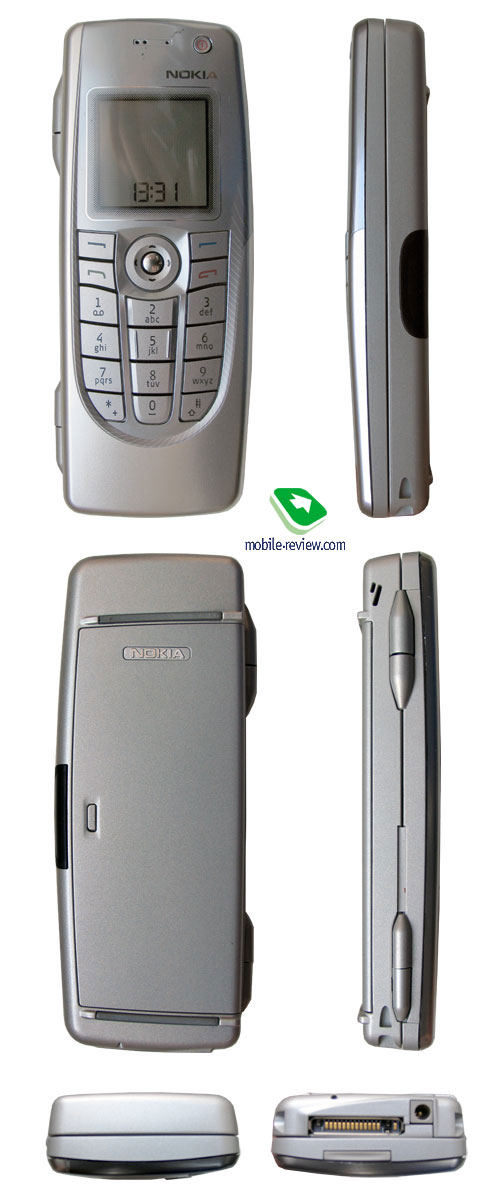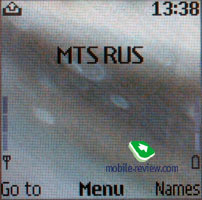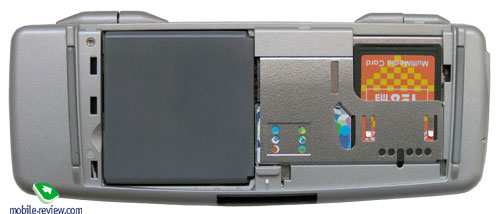
Nokia may be considered a founder of communicators as a special class of devices. Today many devices are called this way but first a phone equipped with a QWERTY-keypad and having handheld computer functionality was meant when saying this word. None of the smartphones come under this description and the absence of a fully functional keyboard makes them form another class. When saying "another class" we do not mean any on the decline functionality but the fact the device belongs to another form-factor, judge yourself, that's hard to integrate a QWERTY-keypad into a body of a usual mobile phone. Today we see some attempts to integrate a QWERTY-keypad into a number of smartphones without increasing their size but a final result is too doubtful and is obviously inferior to full-size solutions.
So, Nokia 9300 is a younger model of the two communicators by the company. Nokia 9500 has a more capacious battery, an integrated camera and a support for Wi-Fi. Thus the manufacturers achieved a smaller size as a result of these changes. The device weights 167 grams (against 222 for Nokia 9500) and what is the main the dimensions have also been changed - 132x51x21 mm (against 148x57x24 mm). The communicator is possible to carry in a pocket of a shirt but you won't look the best. The device is better to carry in a special case on your waist but that's not comfortable sometimes and thus in a bag it will be the best. I'd like to add a device of this size is not comfortable for everyday use if you speak on it very often. The problem was unsolvable earlier and now the way out is to use a bluetooth headset equipped with a display. That means Nokia 9300 is in a bag and a headset is fixed on a lapel thus you can see the number of a caller and accept or reject the call, or you may take the communicator of the bag and make a conversation. There are no original headsets with these parameters and finally you may use a product by Sony Ericsson in a bond. Only having such a bond you don't think about the dimensions. In the nearest future the majority of communicators will be equipped with such mobile modules for connection, the concept is known for more than a year and was represented at exhibitions not once. That's hard to say who will be the first but obviously Motorola will offer the solution in autumn 2006.

Before considering the functions the thing I'd also like to mention that makes the difference from all the smartphones in the ideology of work. Here the phone and communicator's functions are separated almost physically. The computer part is always on and may not be turned off in principle (only by taking the battery off but it is a reset already). The device is turned on by a separate button and works as a separate module (contacts, messages, call lists are common for the whole device). You look at the device and see a phone just a big one. But you need only to turn it horizontally, open and you'll get a small handheld.

The opening process makes no problems. The fact that the centre of gravity is a bit disposed is a real shortcoming thus if the opening angle is more than 45 degrees the upper part will outweigh the lower one. The fact leads to the necessity to hold the device with fingers when entering data and you wont' manage to type like on a computer keyboard. But let's speakl about each part in order and we'll start with a phone one.

Nokia 9300 in a phone mode
Having a brief look you'll certainly understand the phone part is a typical 40th platform with all its minuses and pluses. The external 65K TFT screen has the resolution of 128x128 pixels. The display is similar to the one used in Nokia 6230 and a number of other products. The screen fades in the sun and this is mainly connected with its small size. The information may be read still.

The keypad is made of plastic, the keys are sunk deeply into the body and this seems a sensible solution trying to decrease the thickness of the device. That's easy to work with the keys due to their space and in the majority of cases you'll only have to type in numbers from this keypad (entering messages seems a blasphemy when having a QWETRY-keypad for the device). In several weeks of using the device discovered the keys got own motion and began "playing" in slots. The explanation is the manufacturer made the upper part interchangeable and I won't judge how reasonable it is for a business product. This is either homage to fashion or implementing one's wish. The navi joystick is quite comfortable and is easy to work with. The backlighting is white, not very bright but the characters are seen clearly.
There is an On/Off button above the screen and a standard Pop-Port connector and a charger slot on the bottom. An IrDA gap may be seen on the right-side surface.
The back panel is equipped with rubber projections because the device will be put on even surfaces mostly. The cover is fixed with a single catch and a backlash appears in time. There is no a connector for a memory card outside and unfortunately the card is traditionally inside the device (but hot change is also possible).
The battery is 970 mAh Li-Ion and according to the manufacturer is capable of working for 200 hours in the standby mode and up to 4.5 hours in the talk mode. In Moscow the device worked for about 2 days in case of 30 minutes of talks and up to 10 minutes of using other functions (communicator possibilities were not used at all). That's natural that using Nokia 9300 this way is impossible and when used properly and also spending 30 minutes on talks the device will work for about a day. So, in general you should expect the device will need recharging every evening. Full recharging takes about 2 hours.

You can use a phone book from the phone mode. It's standard for the device by Nokia and the only difference is in the absence of any limits put on the number of the entries.
No comments:
Post a Comment